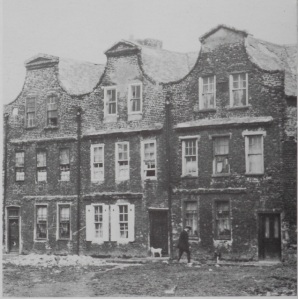
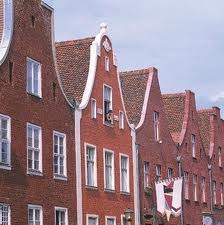
Strolling through some of Dublin streets at the begining of the 18th century, an English visitor to the city would have been met by a streetscape more remincent of Amsterdam than London. The streets would have been full of large, redbrick, gabled-fronted houses, familiar to anyone who has ever visited the Netherlands. These distinctive buildings were known as Dutch Billys and by the early 18th century they had come to dominate the city’s skyline. This makes their absence from the modern city streetscape all the more startling. Their fall from grace began in the mid to late 18th century with the arrival of a new architectural form, championed by large and wealthy developers such Luke Gardiner. This new ‘Georgian’ style of building, which is so synonymous with the modern city, rapidly replaced the earlier Dutch Billys as these were no longer deemed fashionable or desirable. However, they did not completely disappear and many still survive in the city, although often hidden behind ostensibly Georgian facades.
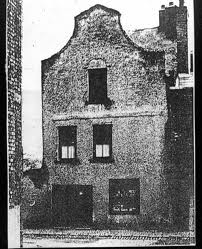
The orgins of Dublin’s Dutch Billys lie in the late 17th century when the city under went a period of rapid urban regeneration. This corresponds to a time of political and social stability, which followed the restoration of the Monarchy in 1660 and the re-establishment of English control with return of the Duke of Ormonde as viceroy in 1666. It saw an extensive re-development of the city, especially to the north and west, with the realignment of medieval streets, the laying out of new suburban blocks such as Smithfield in Oxmanstown, the construction of quay walls and new bridges across the Liffey as well as a vast programme of reclamation from the river (after Cryherhall 2006).

Dublin’s Dutch Billys were reputedly named after William of Orange, and their arrival in Dublin is generally attributed to an influx of French Huguenots after 1685 and to Dutch and Flemish Protestants fleeing persecution after 1690 (Craig 1980, 86-87). However, it is clear from a number of excavations in Dublin including Smithfield (Directed by Franc Myles) and Newmarket (Directed by William Frazer) that this Anglo-Dutch building style was prevalent since at least the 1660s. The distinctive features of these buildings was that the roof-ridge ran at right angles to the street with the front gables, in the most characteristic examples, being masked by quadrants sweeping up to very flat curved or triangular pediments. These houses were built of brick, normally on stone foundations, and designed to stand in continuous terraces. Very often economy was achieved by the use of corner fireplaces so that two houses might share a single huge chimney-stack. The returns generally contained a small closet on each floor, and the roof-pitch was steeper than became usual later in the century (Craig 1980, 86-87).


Recent archaeological excavations in Dublin have thrown further light on this building form with whole streetscapes of Dutch Billys being uncovered at locations such as Smithfield, Dublin 7 (Directed Franc Myles) and Hammond Lane/Church Street, Dublin 7 (Directed by Abi Cryerhall, Colm Moriarty and Sinead Phelan). Although the structures at these sites only survived to basement level they were remarkably similar in form. They were typically divided into two or three rooms that contained corner fireplaces and had compact floors of either cobbles or redbrick. The lower walls were generally constructed out of calp limestone, over which upper courses of redbrick had been laid. In many instances the houses shared party walls and corner chimneys suggesting that they were laid out to a single organised plan.

As already mentioned many of these important early houses still survive, cloaked behind a modified Georgian façade, such as the pictured houses on St. Stephen’s Green, where the clustered windows at second floor level indicate the original outline of the gables, with an additional storey built above. Other Dutch Billys can be found on Capel Street, Thomas Street, Molesworth Street, South Frederick Street and elsewhere (after http://www.dublincivictrust.ie/buildings.php)
Dutch Billys outside of Dublin
The popularity of Dutch Billys was not just confined to Dublin, with large numbers also being built in cities such as Cork, Limerick and Galway. In addition many fine examples are recorded from smaller provincial towns, for example Derry and Wexford. The building style was also used in some large country houses such as Palace Anne in Co. Cork (see image below). A number of these non-Dublin Dutch Billys are illustrated below.
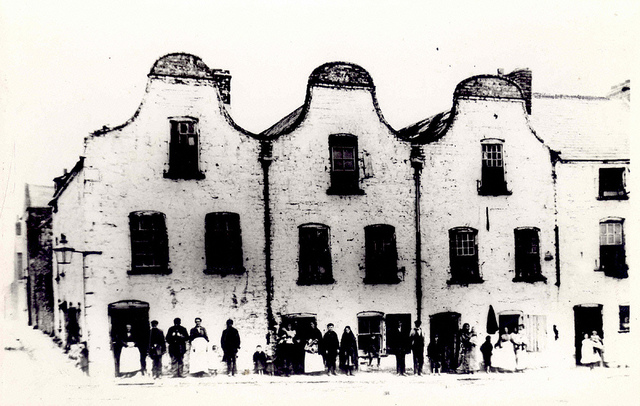
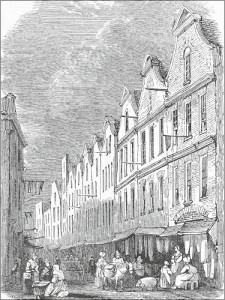

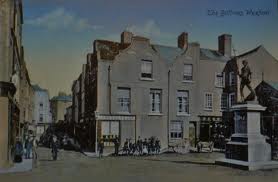
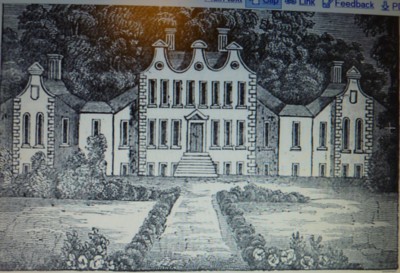
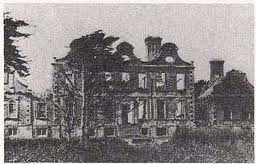
References
This short blog post is indebited to an excellent thread on Archiseek ,which I highy recommend to anyone interested in Dutch Billys.
Craig, M. 1980. Dublin 1660-1860: The Shaping of the City. Liberties Press, Dublin.
Cryerhall, A. ‘Excavations at Hammond Lane, Dublin: From Hurdle Work to Iron Foundary’ in Sean Duffy (ed.) Medieval Dublin VII. Four Courts Press, Dublin. pp. 9-50.
Pearson, P. 2000. The Heart of Dublin: Resurgence of an Historic City. O’Brien Press. Dublin.



http://g.co/maps/yf28f Could only find on Dutch Billy in Capel St. Hope any remaining ones are protected
There are a few more alright Moira, but due to later alterations they are hard to see from street level. Even the classic gable on the Dutch Billy you illustrated is a relatively modern remake.
No. 66 is a lovely example of a Dutch Billy though, apparently it was built between 1716-19. I’ve always loved it’s distinctive doorway.
Nice article! There’s a review of the recent Dutch Billy conference in Dublin here: http://wastedonarchaeology.wordpress.com/2011/10/13/dutch-billys-%E2%80%94-the-game-is-on/
Thanks Franc. That was a great looking conference. Do you reckon there is any chance of a follow on publication?
Are you sure there weren’t any in London? It’s a style that stretched across Northern Europe as far, I think, as Koenigsberg, so it would be unusual if it had ‘jumped’ over England.
In Amsterdam the ‘Georgian-style’ straight parapet became fashionable after 1800 and a lot of gabled houses were re-fronted in the new style.
Hi Thaddeus, Dutch Billy style houses certainly made an appearance in London but it appears they never gained the popularity or widespread distribution seen in Dublin and by the start of the 18th century they had largely gone out of fashion. Check out the Archiseek thread on Dutch Billys there is some excellent information there
The link for that thread is, http://www.irish-architecture.com/forum/viewtopic.php?f=15&t=6813&sid=10e620ccc6980dcaa5b4de597c3f2afa.
i don’t know if they’re the same in whatever technical details define a ‘dutch billy’, but dutch gables are very common in norwich
My father grew up at 5 Sweeney’s Lane which is the right side of the three houses shown in the photo. When they left there in 1930 they were demolished. My family lived there from 1875
Noticed this one recently in Waterford… Currently for sale! http://www.daft.ie/searchcommercial.daft?id=65527
At least one surviving in Dublin: http://goo.gl/maps/GEhX6
Frances O’Brien did a dissertation on these houses for an MA in UCD Dept of Art hist in 2006
Thanks for the info about the dissertation
The pair of houses in Boat Street pictured above were in Newry, not Derry as is stated in the caption (more info and photos here: http://www.archiseek.com/forum/viewtopic.php?f=15&t=6813&start=500 )
Newry was apparently once referred to as the Amsterdam of Ireland, because of the network of waterways in the town centre, and dutch-style buildings lining the canal.
Thanks Colm, corrected now.
Is there a terrace of Dutch Billy’s in Temple Bar, on the square that hosts the Central Bank building? And there’s one on Kevin St. situated beside the back gate to St. Patrick’s Grammar School.
Think the terrace in Chapelizod was formerly all Dutch Billies – a rare survival of late 1600s houses still inhabited. Friends of mine very bravely bought one to renovate.
Still plenty of Dutch Billy’s in Drogheda